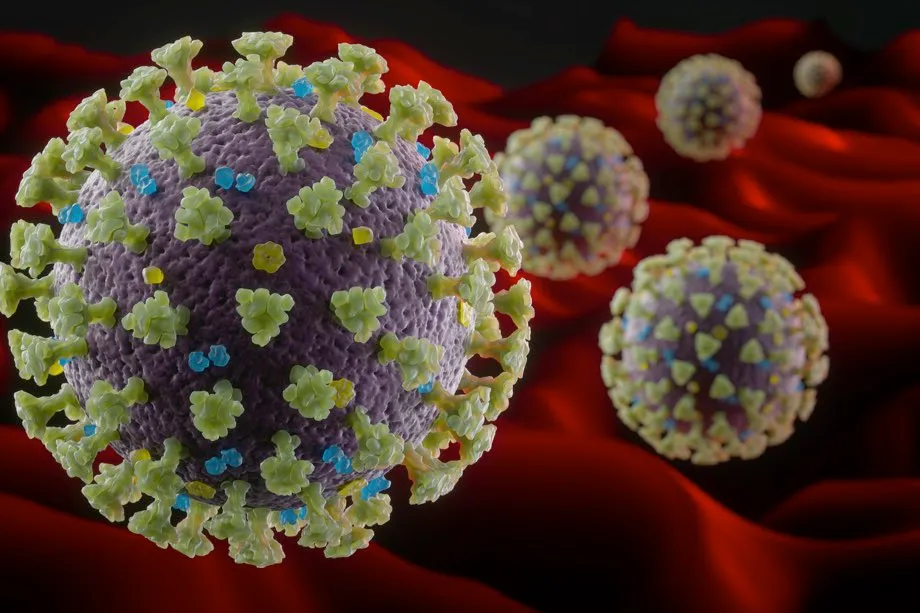- Small-scale study finds patients with coronavirus are most infectious in the first week of symptoms.
- Some patients were found with high levels of the virus 10-11 days after symptoms first started.
- Further research could help to assess whether a high viral load of a patient after the first week of symptoms could signal an aggravation of symptoms.
Coronavirus replicates in the upper respiratory tract and people may shed the virus at high levels during the first week of symptoms, research suggests.
Scientists analysed data from patients to see how infectious they were and when, and how much virus they shed, or excrete.
They looked at nine adults from Munich, Germany, with comparatively mild symptoms of COVID-19 respiratory disease.
Read the latest coronavirus news:
- Coronavirus: social distancing measures working, study suggests
- Behavioural scientists 'very concerned' about mass coronavirus testing
- Big tech and coronavirus: How Google and Facebook could take on the pandemic
Published in the Nature journal, the study shows there is active replication of coronavirus SARS-CoV-2 in the upper respiratory tract of the patients, from the larynx up.
Christian Drosten from Charité – Universitätsmedizin Berlin, and colleagues studied the viral-shedding of the patients who were treated for mild upper respiratory tract symptoms.
Researchers analysed throat and lung samples, sputum (mucus from the respiratory tract), and stool, blood and urine collected from the patients during their clinical course.
They found high levels of virus replication in upper respiratory tract tissues, and report high levels of viral shedding in the upper respiratory tract during the first week of symptoms.

Researchers could also isolate an infectious form of the virus from samples taken from the throat and lungs of the patients until day eight of symptoms, as symptoms waned.
They found that two of the patients, who showed some early signs of pneumonia, continued to shed high levels of the virus in the sputum until day 10 or 11.
According to the study, the virus remained detectable in the sputum after symptoms stopped.
The virus was not detected in blood or urine samples, and the authors did not find a replicating form of the virus in stool samples.
The scientists say additional studies in larger samples are needed to investigate this possible transmission route further.
Our initial results suggest that measures to contain viral spread should aim at droplet, rather than fomite-based, transmission.
They write in the paper: “Our initial results suggest that measures to contain viral spread should aim at droplet, rather than fomite-based (objects or materials likely to carry infection), transmission.
“The prolonged viral shedding in sputum is relevant not only for hospital infection control, but also for discharge management.
“In a situation characterised by limited capacity of hospital beds in infectious diseases wards, there is pressure for early discharge following treatment.
“Based on the present findings, early discharge with ensuing home isolation could be chosen for patients who are beyond day 10 of symptoms with less than 100,000 viral RNA copies per ml of sputum.
“Both criteria predict that there is little residual risk of infectivity, based on cell culture.”
The scientists said further research could help to assess whether increases in the viral load of a patient after the first week of symptoms could signal an aggravation of symptoms.
Do viruses die?
Strictly speaking, viruses can’t die, for the simple reason that they aren’t alive in the first place. Although they contain genetic instructions in the form of DNA (or the related molecule, RNA), viruses can’t thrive independently. Instead, they must invade a host organism and hijack its genetic instructions.
That said, it makes sense to talk of how long viruses can remain viable and capable of infection. Some – including the influenza virus, and HIV, the virus responsible for AIDS – can’t survive for more than a few hours outside a host organism unless kept under carefully controlled conditions.
But others, notably the deadly smallpox virus, can easily remain infectious for years. Historians now believe that dormant smallpox viruses brought to Australia by British doctors in 1787 could have caused a mass outbreak of smallpox among Aborigines two years later.
Read more:
